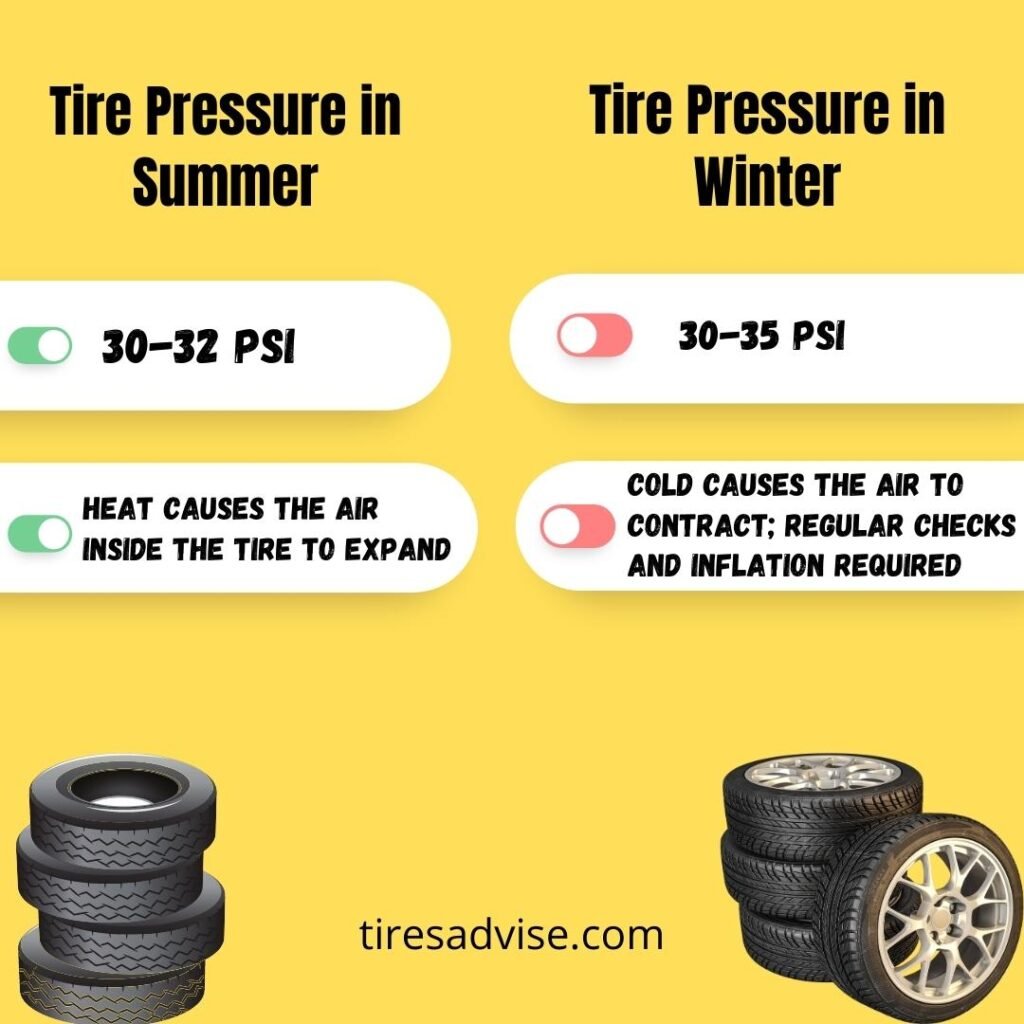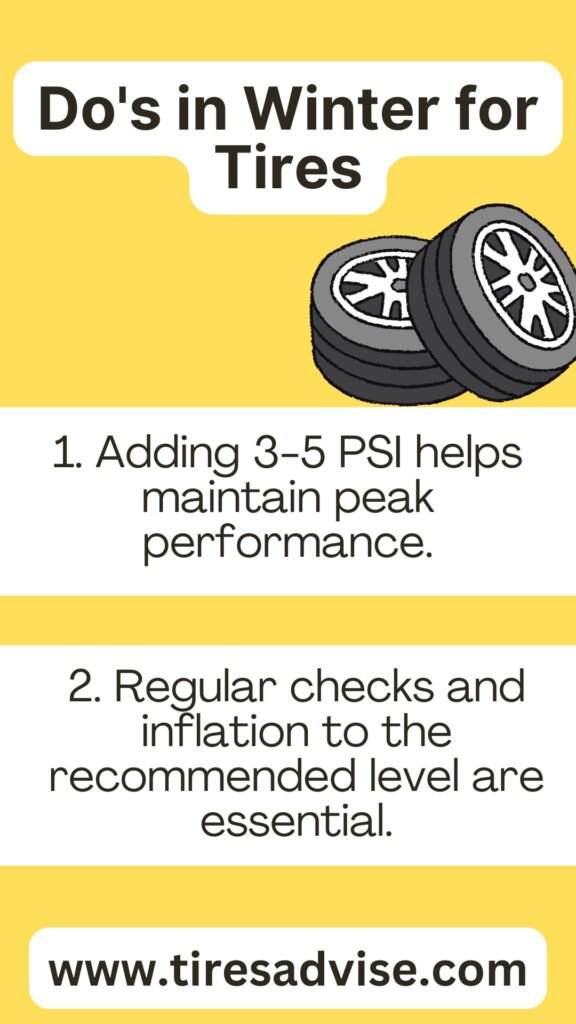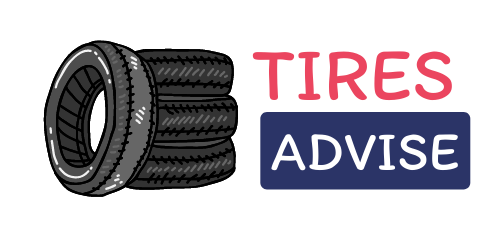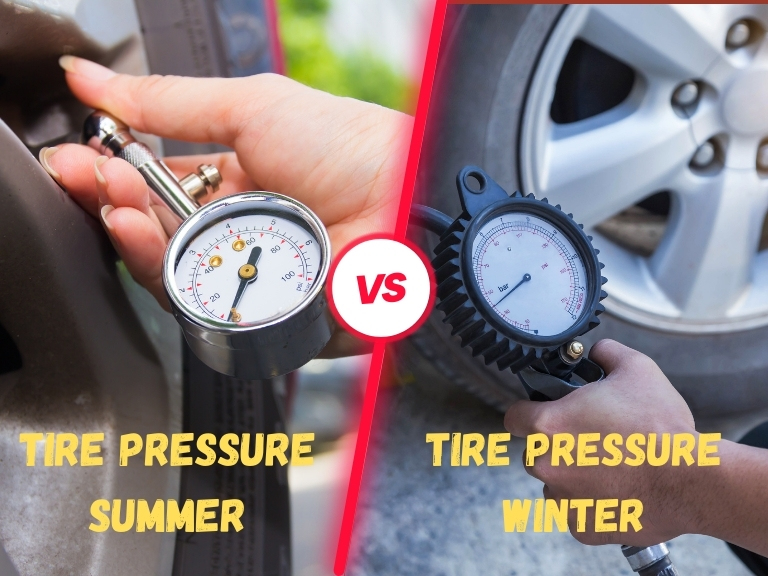Why does your car seem to wobble on a chilly winter morning? Or why does the steering feel unusually stiff on a hot summer day? The answer lies in the tire pressure, a seemingly trivial but crucial aspect of your vehicle’s performance.
As the seasons change, so does the air inside your tires, leading to a myriad of driving challenges. Think about the last time you felt your car behaving differently, and you might find the root cause in the fluctuating temperatures.
This article will unravel the mystery of tire pressure in winter versus summer, offering practical insights and tips. From the icy grip of winter roads to the scorching heat of summer asphalt, we’ll explore how tire pressure adapts, and affects your drive, and what you can do to ensure a smooth ride all year round.
Understanding Tire pressures
Tire pressure is like the heartbeat of your vehicle; it needs to be just right to keep things running smoothly. Navigating the road of tire pressure can feel like a winding journey, but it’s simpler than you might think. Ever wondered why your car’s manual specifies a certain tire pressure? It’s like finding the perfect recipe for a dish; each ingredient must be just right.
- The Perfect Measure: For most cars, the “golden number” lies between 30-32 PSI. It’s your vehicle’s comfort zone, tailored to its unique design, much like your favorite pair of jeans.
- The Upper Limit: You’ll find maximum pressure on the tire’s sidewall, but it’s not for daily use. Think of it as a safety net, there to support the tire’s maximum load, but not a guideline for everyday driving.
- Too Much of a Good Thing?: Overinflating is like over-salting your food; it leads to reduced traction and uneven wear. It’s a harsh ride that you’ll want to avoid.
- Going Too Low: Underinflating, on the other hand, is like undercooking your pasta; it results in decreased fuel efficiency and increased wear, risking a blowout or accident.

Tire Pressure in Summer
Understanding tire pressure is essential, especially during the hot summer months. The relationship between temperature and tire pressure is a fascinating one, and it’s something that every driver should be aware of.
Recommended Tire Pressure for Summer
The summer season brings with it a unique set of challenges for your tires. But what exactly should the pressure be?
- Manufacturer’s Guidelines: The recommended pressure for summer tires is typically between 30-32 PSI. This is often the same as the pressure recommended for all-season tires. It’s essential to follow the manufacturer’s guidelines for your specific vehicle. Why? Because it ensures optimal performance and safety.
- Check the Manual: Your vehicle’s owner’s manual or tire placard will have the exact details. Don’t guess; always check the manual!
Effects of Heat on Tire Pressure
Heat and tire pressure have a complex relationship. Ever wondered why?
- Pressure Increase: For every 10 degrees Fahrenheit increase in temperature, tires can gain 1 PSI. This happens because the air inside the tire expands. It’s like blowing up a balloon; the more you heat it, the bigger it gets!
- Impact on Vehicle: This increase in pressure can affect your vehicle’s handling and fuel efficiency. Overinflated tires can lead to poor handling, longer stopping distances, and uneven tire wear. It’s not just a matter of comfort; it’s a matter of safety.
Tire Pressure in Winter
Winter driving demands special attention to tire pressure. But what exactly is the value of maintaining the right pressure?
Recommended Tire Pressure for Winter
Generally, 30 to 35 PSI is the sweet spot for winter conditions. It’s like setting the thermostat to keep your home cozy during a snowstorm.
Why Increase Pressure for Winter Tires?
Increasing pressure for winter tires is more than a suggestion; it’s a necessity. But why?
- Flexibility and Performance: Winter tires are more flexible, which can increase rolling resistance. Adding 3-5 PSI helps maintain peak performance, like tightening the strings on a guitar to hit the perfect note.
- Cooler Running: Lower ambient temperatures mean tires run cooler, building up less hot tire pressure. The extra PSI offsets this, ensuring stability, much like adding an extra log to the fire.
Impact of Cold Temperatures on Tire Pressure
Cold weather significantly affects tire pressure. As temperatures drop, the air inside the tire contracts, reducing pressure by one to two psi for every 10-degree decrease. This isn’t due to air escaping but rather condensing, taking up less space.
The TPMS (Tire Pressure Monitoring System) light may alert you to this change, but it’s often temporary, as driving heats the tire, restoring pressure. Winter can alter tire pressure by up to 10 psi, so regular checks and inflation to the recommended level are essential. Proper tire pressure ensures optimal traction, grip, fuel efficiency, and overall vehicle performance in cold conditions.

Tire Pressure Summer vs Winter – Summary
| Aspect | Summer | Winter |
| Recommended Pressure | 30-32 PSI (Check manufacturer’s guidelines or vehicle’s manual) | 30-35 PSI (Increase by 3-5 PSI for winter tires) |
| Effects of Temperature | For every 10°F increase, tires gain 1 PSI | For every 10°F decrease, tires lose 1-2 PSI |
| Impact on Vehicle | Overinflated tires can lead to poor handling, longer stopping distances | Proper pressure ensures optimal traction, grip, fuel efficiency |
| Special Considerations | Heat causes the air inside the tire to expand | Cold causes the air to contract; regular checks and inflation required |
| Driving Experience | May feel wobbly or less responsive | Steering might feel stiff or overly responsive |
| Fuel Efficiency | The lower pressure may reduce fuel efficiency | Higher pressure can improve fuel efficiency |
Conclusion
In the dynamic world of tire pressure, understanding the interplay between winter and summer is crucial. As temperatures fluctuate, tires respond with changes in pressure, affecting performance and safety.
The key lies in vigilance—regular pressure checks and adjustments ensure optimal safety and performance. So, as the seasons change, let’s embrace the journey with properly inflated tires for a smoother and safer ride.

